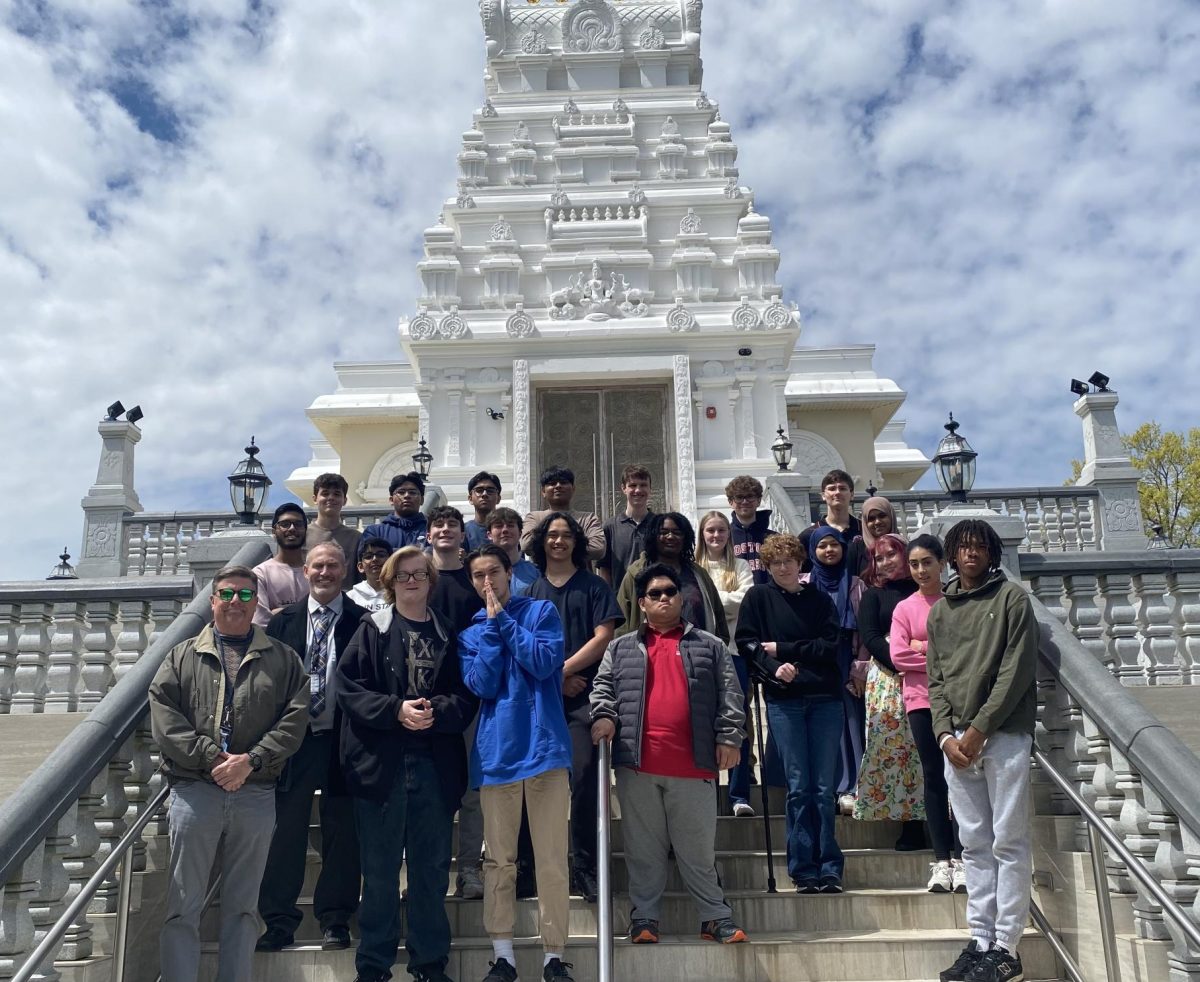On Thursday, April 25th, a group of students, including myself from Mr. Knaub’s World Religions class, had the opportunity to visit different places of worship as part of a class field trip.
It was an excellent way for students to learn more about various religious traditions and practices and to experience firsthand the diversity of beliefs and cultures in our community.
“We have been doing the World Religion field trip for all 24 of my years here at the school. Our stops are the North Penn Mosque in Lansdale, the Beth Or Synagogue, Maple Glen, the Bharatiya Hindu Temple, Montgomery Township, and Saint Philip’s Orthodox Church in Souderton. We get to tour the houses of worship, have speakers share about their religion and beliefs, and discuss key aspects and reasons for the decor or structure of the buildings,” Knaub explained.
We visited the North Penn Mosque as our first destination during the trip. Upon arrival, we were warmly welcomed by Muslims who follow the Islamic religion and offered refreshments. We were given a presentation about their Islamic faith, which included their beliefs, practices, and history. At the end of the presentation, they opened the floor for questions and answered them patiently and kindly. It was an excellent opportunity to learn and understand more about a religion I wasn’t unfamiliar with.
The second destination on the trip was Beth Or, which is a synagogue. Our visit to the synagogue was a remarkable and solemn experience. We were amazed by the stunning stained glass paintings and windows when we entered the sanctuary. We learned about the symbolism behind each pane of glass that told stories of faith and resilience passed down through generations. As we moved further into the sanctuary, we discovered a collection of Torahs. Toward the end of the tour, we stood before a memorial dedicated to the honored members of the synagogue who perished in the Holocaust. Names etched on a plaque served as a reminder of the atrocities endured and the profound loss suffered by the Jewish community.
During our visit to the Hindu Temple, the priest warmly welcomed us. He shared valuable insights about the diverse pantheon of Hindu gods, each embodying different facets of life and existence. The highlight of our visit was experiencing the sacred ritual called ‘Aarti,’ where the priest offered light to the deities while chanting hymns. The temple came alive with a palpable reverence as the priest continued the ritual. The architectural beauty of the temple spoke of centuries of craftsmanship and devotion and served as a testament to the enduring legacy of Hindu culture.
Entering the Orthodox Church was an artistic experience, like stepping into a sanctuary of sacred art and profound spirituality. Everywhere we turned, we were met with the gaze of prophets and priests, their images adorning the walls in vibrant hues, each telling a story of faith and devotion. The priest who guided us through the intricate traditions of the Orthodox branch of Christianity was kind and knowledgeable, and we were grateful for the opportunity to learn from him. One of the most enlightening aspects of our visit was discovering the significance of baptism and its role in the Orthodox faith. Through the priest’s teachings, we gained a deeper understanding of the sacrament and its connection to the life and teachings of Jesus Christ. Towards the end, the priest gifted us with a profound experience: the gift of song.
Establishing positive and meaningful relationships with religious leaders ensures a smooth trip. Building these connections can help ensure a successful and enriching experience for all involved.
“I have had and continue to have the privilege of interacting with religious leaders of each place over the years and have tried to build good relationships with each person. When I first asked about coming many years ago, they were all very willing to have us and continue to do so,” Knaub said.
Students who experienced this field trip are taking the ‘World Religions’ elective history course.
“World Religions class is an elective course that seeks to give students an overview of major religions, which is the bulk of the time, but then covers minor religions and topics related to religion in general. We have speakers come to class for each major religion, and we are able to visit their places of worship on the trip,” Knaub stated.
The purpose of this trip is to provide students with an enjoyable experience visiting various houses of worship and to facilitate a deeper understanding of different religions.
“I hope they enjoy going to each house of worship, but I also hope they gain a deeper understanding of each religion as they make connections to beliefs and practice at each place. When students see the icons at the Orthodox church or the idols at the Hindu temple I think a deeper grasp of the particular religion occurs,” Knaub described.


